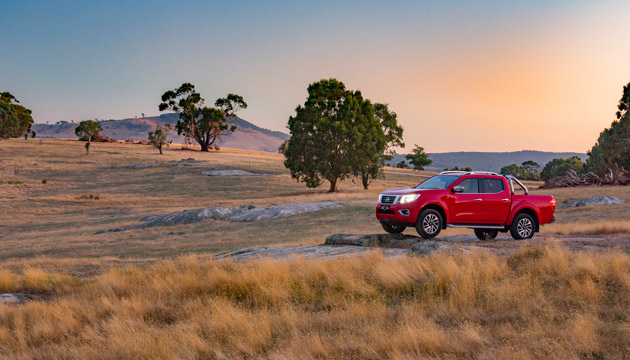Nissan’s Navara reworks its credentials.
Story Bruce McMahon
Nissan’s Navara is a trooper – one of the long-term stayers in the one-tonne ute market, with heritage that stretches back to the mid-1980s and, before that, 40 years of Datsun-badged utes.
While never outselling the Toyota HiLux, the Navara has always been a strong competitor, often outpointing rivals in some areas. The Navara D40, in particular, was at the forefront of today’s more civilised, more attractive crop of utes that, in four-door guise, have become substitutes for four-wheel-drive family wagons.
The current generation of Nissan Navara arrived in Australian showrooms in 2015 and early in 2018 scored its second, and arguably most important update to help bridge gaps to an acclaimed crop of rivals that now includes the big-selling Ford Ranger, the most popular of the 4WD utes.
The Navara can be bought as a single cab, king cab or dual cab, two or 4WD. There are five trim levels, the choice of six-speed manual or seven-speed automatic transmissions and a 2.3-litre turbocharged diesel engine available in two levels of tune and power output. While those buying a ute primarily for work are more likely to be looking at the more basic of the Navaras – and in particular the 120kW versions – much of the ute business, and most of the interest these days is at the top end of the range.
Nissan’s ST-X and ST versions make up more than 75 percent of Navara sales. Ninety percent of all these utes sold are dual cabs and 80% are 4WD. There are rich pickings, with a range-topping dual cab, 4WD ST-X Navara starting at a recommended $51,990.
There has been little change in the current Navara’s cosmetics since 2015. Most of the lines are clean and tidy and have softened a touch from the previous D40. Nissan says this gives the ute more ‘SUV-style’. Of note is the sliding back window – for carrying extra-long lengths of timber or yelling at the dog in the tray perhaps – and the largish lip on the tailgate.
Inside, the cabin’s design and swag of gear more resembles a family’s SUV wagon than a work vehicle. By the time a buyer has stepped up to the ST-X Navara there is little missing from a luxury sedan, with features from satellite navigation to Bluetooth connectivity and a push-button start for the engine. And to aid the reasonable visibility in all directions, rear parking sensors plus an ‘around-view’ monitor that gives a bird’s-eye view of the ute, are handy in a 5.2-metre-long vehicle.
The four-door Navara, with the 140kW, twin-turbocharged diesel engine, can carry four adults in comfort, has a payload of 931 kilograms and can tow 3.5 tonnes. So it is a workhorse with weekend credentials.
And while the first of this current generation of Navaras was recognised as a well-built, handsome-enough machine with a decent array of creature comforts and safety features, there were some questions about the ability of the Thai-built utes’ suspension to handle week-day workloads. The Navara did not quite stack up to the ride and handling attributes of the Ford Ranger, among others, despite some 1,000,000km of ‘real world’ tests.
So in early 2017 Nissan engineers landed in Australia for testing on local roads under local conditions to check the coil-sprung Navara’s ride and handling characteristics with and without loads and when towing – ‘real Australia’ tests. The results were a range of tweaks to the ute’s spring rates, plus faster steering gear ratios designed to better suit our conditions and driving styles.
These have improved the Navara’s ride and handling attributes, most noticeably when towing. It is also less troubled with half a tonne in the tray, the dual-rate rear springs, plus a higher-riding stance allows the ute to sit more comfortably and steer with more confidence when working.
The dual-cab ute market here is very tough and very competitive because Australians expect much from these machines. And that means manufacturers continue to pay attention to local needs, as evidenced by Nissan’s retrospective engineering to make the 2018 Navara a better vehicle than its predecessor.
This story excerpt is from Issue #121
Outback Magazine: October/November 2018










